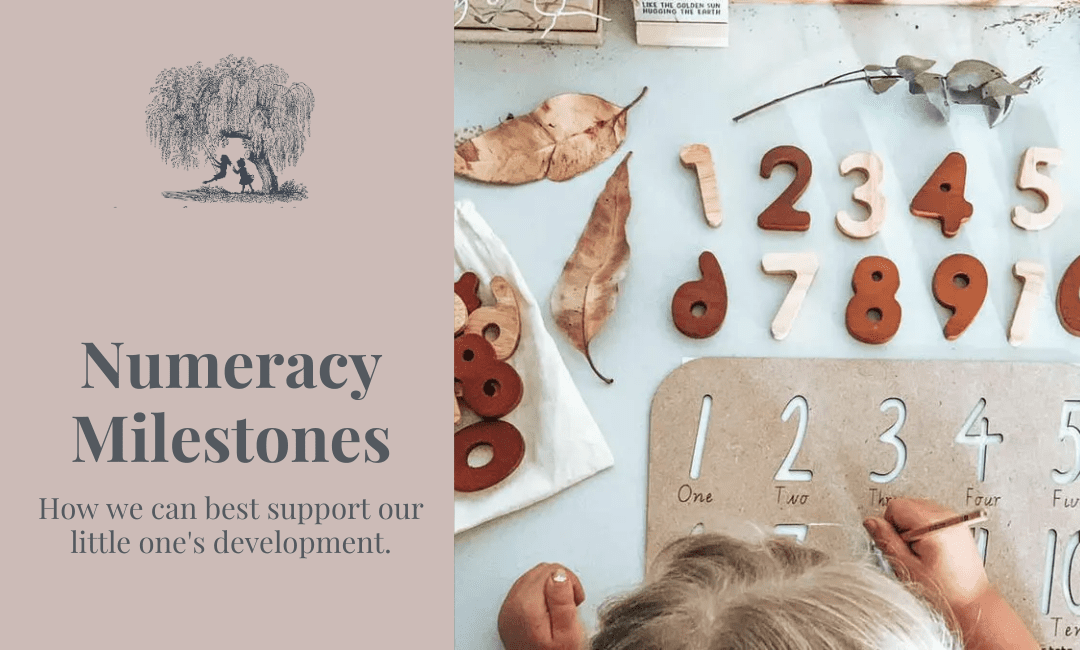Our Little Ones are seriously amazing. From the moment they are born they are processing their surroundings, exploring, and learning.
Our Little One’s math’s skills don’t just start at school, or even at pre-school. They are laying the foundations for these skills as a newborn!
For some of these skills, we know that most children will hit at roughly the same age and some skills will develop at different times, depending on the child. So please keep that in mind when scrolling through the following information.
Read on to see the math milestones we see in little ones and also what activities or resources can help to encourage the development of these skills.
Babies (ages 0–12 months)
- Begin to predict the sequence of events - like running water means bath time
- Start to understand basic cause and effect - shaking a rattle makes noise
- Begin to classify things in simple ways - some toys make noise and others don’t
- Start to understand relative size - baby is small, parents are big
- Begin to understand words that describe quantities - more, bigger, enough
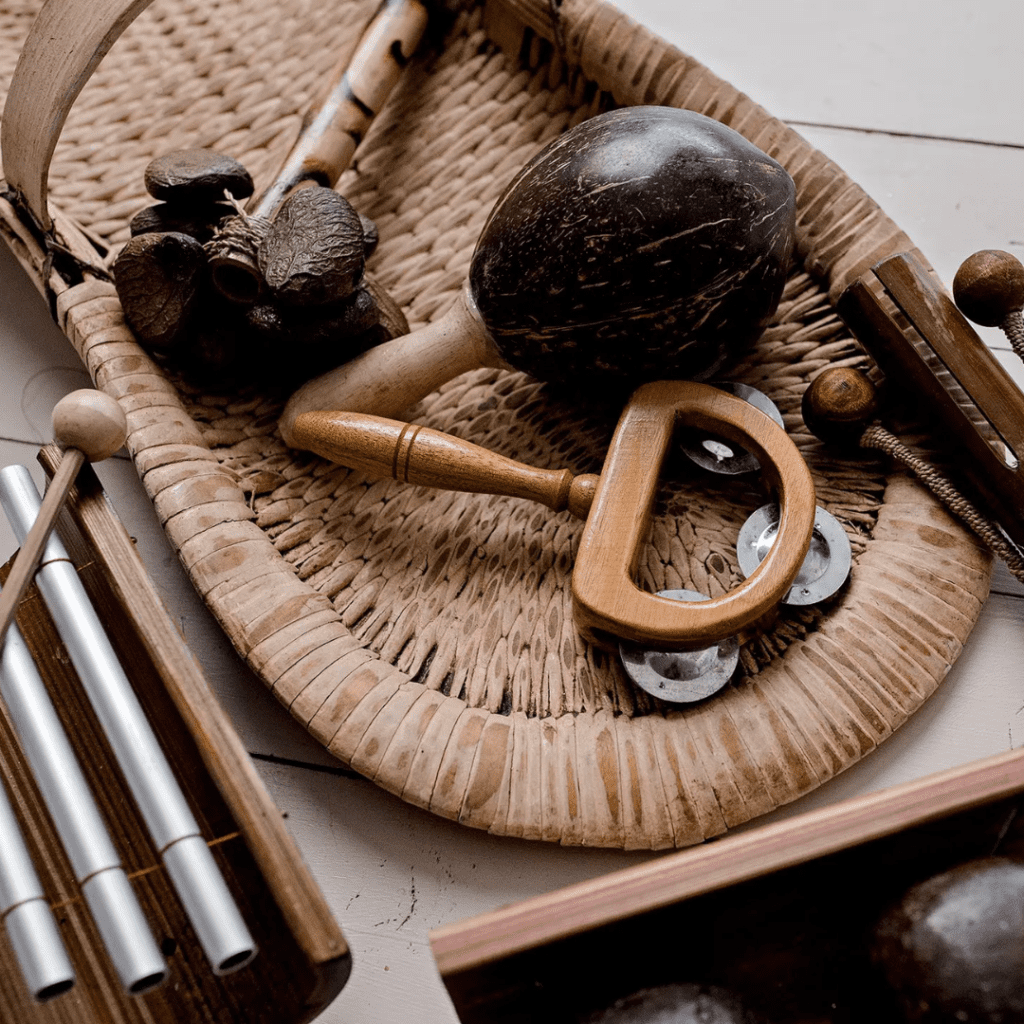
ACTIVITY:
Musical Instruments are a fantastic way to encourage the development of math skills in our littlest ones.
Using musical instruments with music helps your little one to learn rhythm as well as the concepts of fast and slow and patterns.
Toddlers (ages 1–2 years)
- Understand that numbers mean “how many” - using fingers to show how many years old they are
- Begin reciting numbers, but may skip some of them
- Understand words that compare or measure things - under, behind, faster
- Match basic shapes - triangle to triangle, circle to circle
- Explore measurement by filling and emptying containers
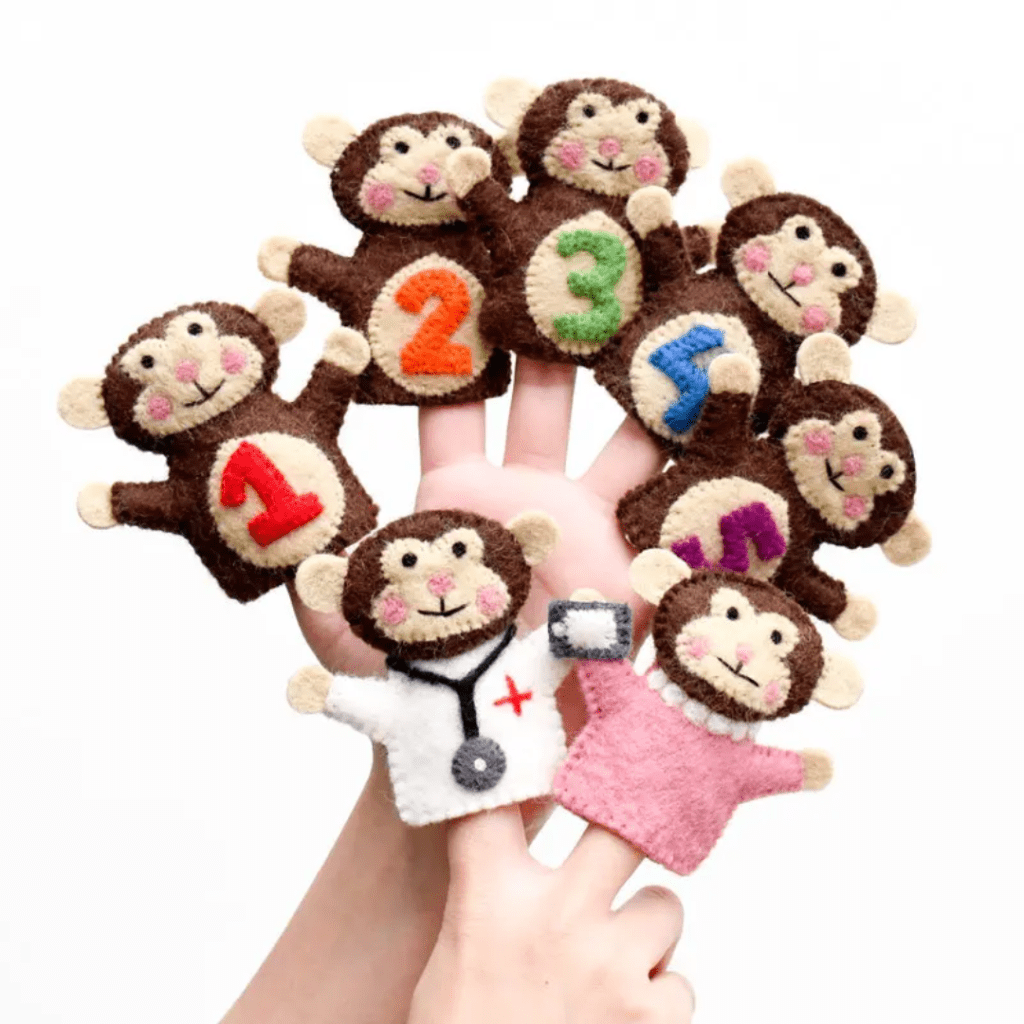
ACTIVITY:
A great way to teach numbers and counting is through song! These gorgeous finger puppets are a great way to introduce numbers to your toddlers whilst singing or ready “5 Little Monkeys”.
Also available in “5 Little Ducks”
Pre-schoolers (ages 3–4 years)
- Recognize shapes in the real world
- Start sorting things by colour, shape, size, or purpose
- Compare and contrast using classifications like height, size, or gender
- Count up to at least 20 and accurately point to and count items in a group
- Understand that numerals stand for number names - 5 stands for five
- Use spatial awareness to put puzzles together Start predicting cause and effect (like what will happen if they drop a toy in a tub full of water)
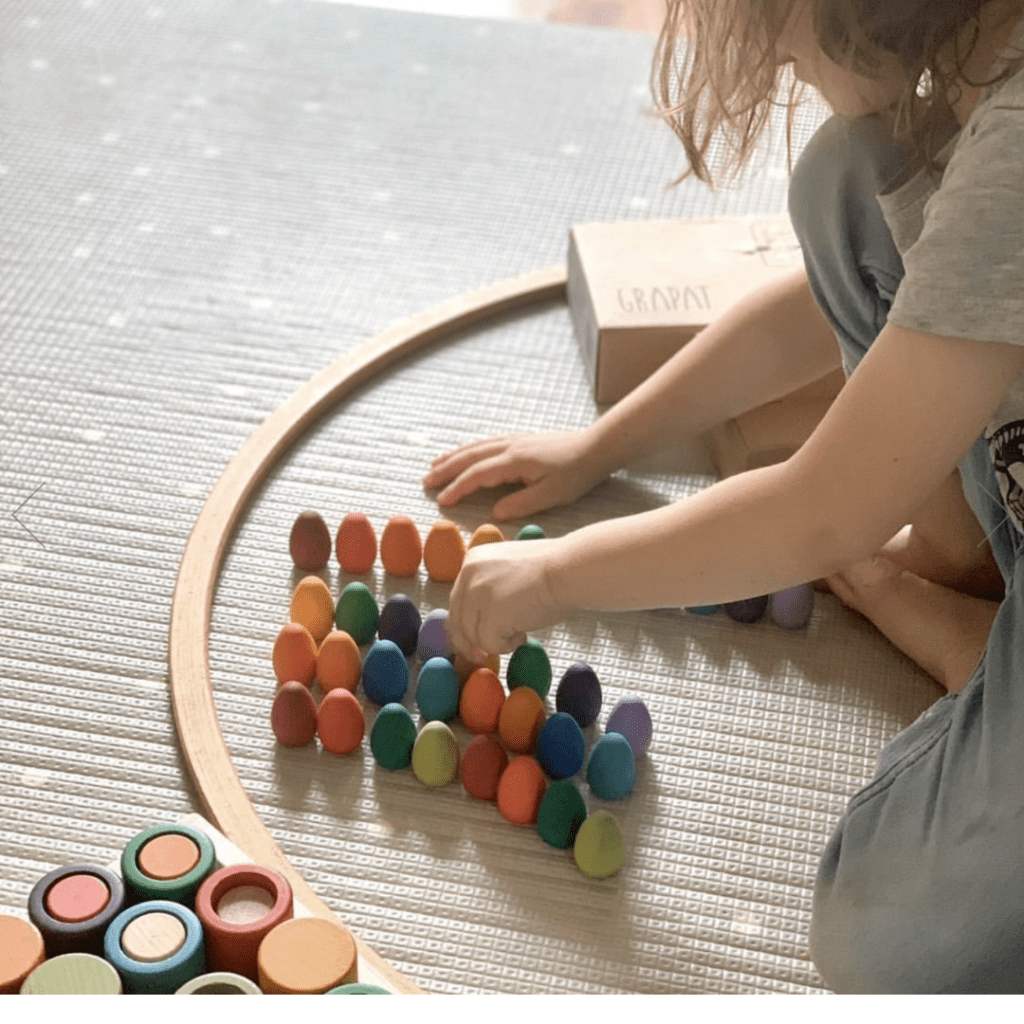
ACTIVITY:
Sorting activities and loose parts play are great for pre-schoolers. They can be used for sorting, counting, pattern creation and more!
These Mandela Rainbow Eggs are bright and engaging and perfect for sorting into colours or using to line up in bright colourful patterns.
Kindergartners (age 5 years)
- Add by counting the fingers on one hand — 1, 2, 3, 4, 5 — and starting with 6 on the second hand
- Identify the larger of two numbers and recognize numerals up to 20
- Copy or draw symmetrical shapes
- Start using very basic maps to find a “hidden treasure”
- Begin to understand basic time concepts, like morning or days of the week
- Follow multi-step directions that use words like first and next Understand the meaning of words like unlikely or possible.
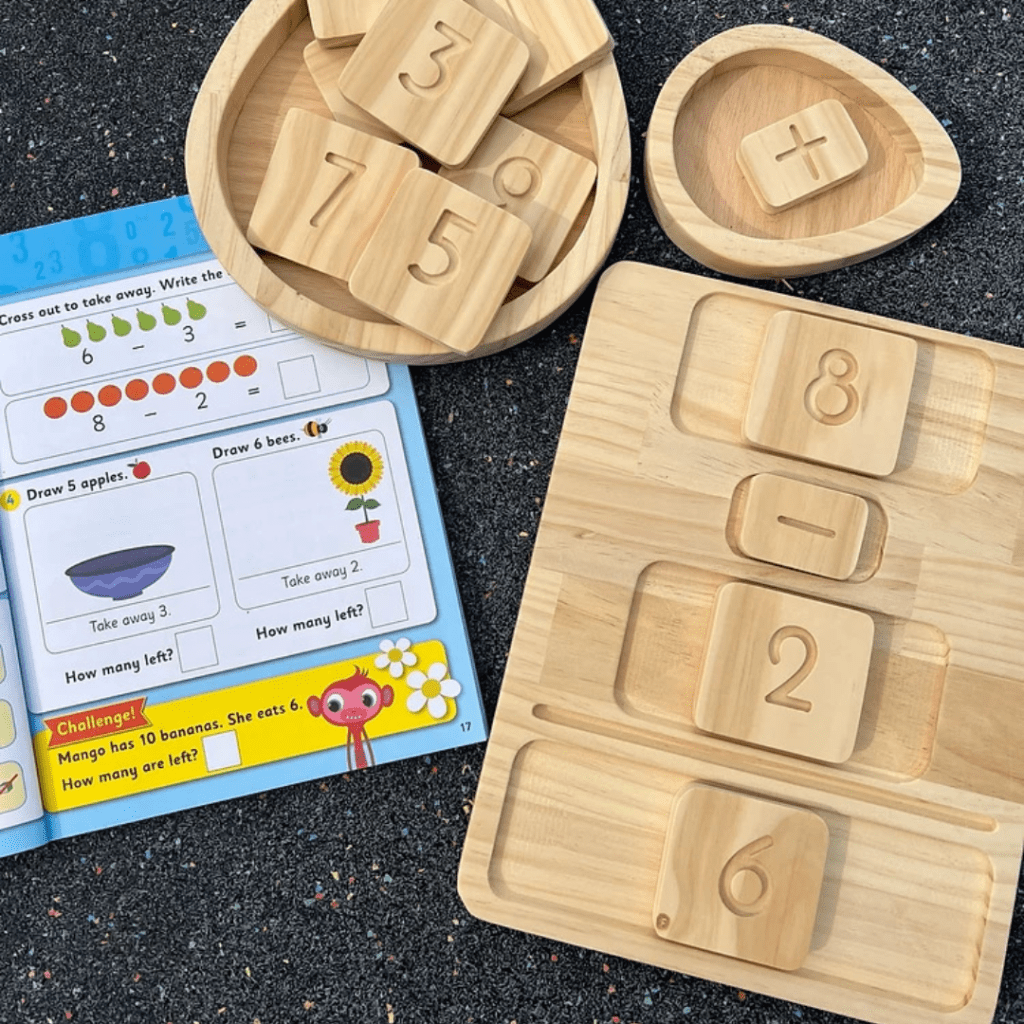
ACTIVITY:
This incredible Math’s Board & Tiles from Serenitoys is a great way to bring the fun into learning basic math’s equations.
You can set the math's question yourself or you can have your little one do a lucky dip and make up all kinds of equations.
Stage One Primary School
- Predict what comes next in a pattern and create own patterns
- Know the difference between two- and three-dimensional shapes and name the basic ones - cubes, cones, cylinders
- Count to 100 by ones, twos, fives, and tens
- Write and recognize the numerals 0 to 100, and the words for numbers from one to twenty
- Do basic addition and subtraction up to 20
- Read and create a simple bar graph
- Recognize and know the value of coins

ACTIVITY:
When our little ones are getting not so little, pretend play is a great way to help with bigger skills. Introducing play money and playing shop or restaurant is a wonderful way of practicing adding and subtraction skills.
Stage Two Primary School
- Move from using hands-on methods to using paper and pencil to work out math problems
- Work with money
- Do addition and subtraction with regrouping - also known as borrowing
- Understand place value well enough to solve problems with decimal points
- Know how to do multiplication and division, with help from fact families - collections of related math facts, like 3 × 4 = 12 and 4 × 3 = 12 Create a number sentence or equation from a word problem
Stage Three Primary School
- Start applying math concepts to the real world - like cutting a recipe in half
- Practice using more than one way to solve problems
- Write and compare fractions and decimals and put them in order on a number line
- Compare numbers using > (greater than) and < (less than)
- Start two- and three-digit multiplication (like 312 × 23)
- Complete long division, with or without remainders
- Estimate and round
Remember that our Little One’s develop at different paces. Some may gain some math skills earlier or later than their peers and that is ok.
If you have concerns about your little one’s numeracy milestones, have a chat with their educators.
Most importantly though, our little people THRIVE when learning can be stress-free and fun, hopefully some of these activities and resources will help your little one to develop and learn without them even realising it!




